Email Marketing
Top 10 Ways to Use Dynamic Content in your Email Campaigns
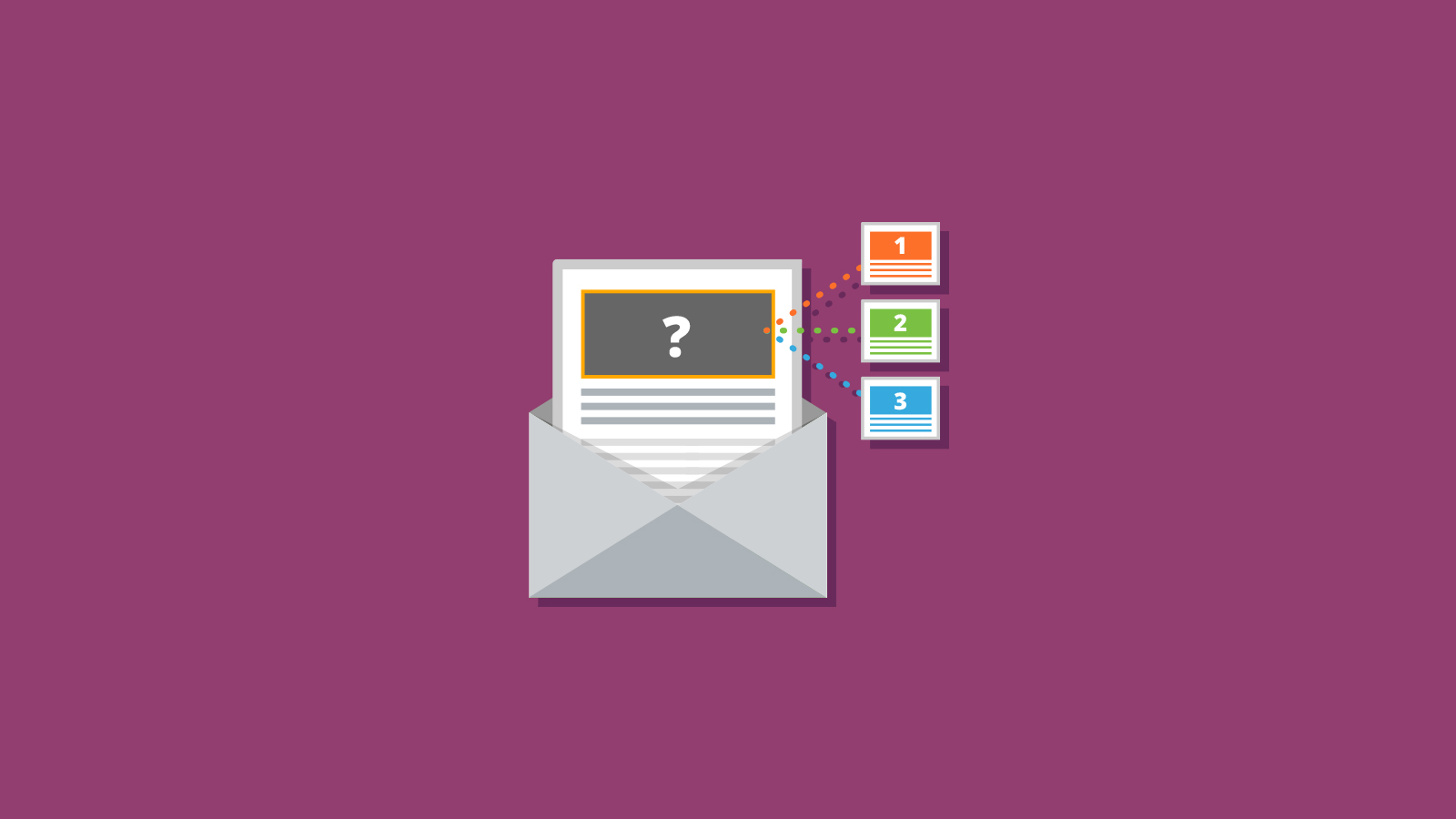
Email Marketing

Personalized emails are a lot more effective than impersonal email blasts. But how do you personalize in a more meaningful way than simply adding subscribers’ first names?
Whether you realize it or not, you’ve captured a lot of information about your subscribers. Instead of letting this data waste away, there are ways to use it to create more personalized (read: relevant) campaigns and transactional messages with dynamic email content.
In this article, we’ll go over what dynamic content is, its benefits, different types of dynamic content, and ten ways to use dynamic content to improve your email marketing strategy.
Before we dig into ways you can use dynamic content, let’s go over what dynamic content is and address the difference between list segmentation, basic personalization, and dynamic content.
In a nutshell, dynamic content (or conditional content) is any personalized element in an email message that changes based on subscriber behavior or customer data. For instance, you can draw upon data you’ve collected about age, gender, past purchases, or geolocation and then use variable mapping to generate personalized and relevant email messages.
What we really mean by “changes” is that an email’s content may be different depending on when a subscriber opens it or what they’ve done since you sent the email. That could include (among many things) a subject line that changes based on subscriber interests, an offer that changes based on available inventory, or an email design that changes based on the weather in a subscriber’s hometown.
That sounds like a lot of work, you might say, and doesn’t email list segmentation allow you to personalize emails already? You’re not wrong.
But list segmentation doesn’t go as far as dynamic email content. You can segment your list based on reader characteristics, but when it comes time for email marketing campaign deployment, you’ll still have to manually create and deploy multiple campaigns based on each segmented list.
With dynamic content, you can send one campaign, one time, that is optimized and targeted to every individual by leveraging subscriber data and behavior.
Creating dynamic content consists of three steps:
The key to making dynamic email content work is strategy. What’s the purpose of having an email change dynamically? Do you want to use a countdown timer to create a sense of urgency? Do you want to personalize the experience with subscriber-specific articles or product recommendations? Perhaps you just want to dynamically change messaging in the email copy based on subscriber demographics.
Dynamic email content is a powerful tool. In fact, with the increased personalization and customization, you can:
We mentioned above that you can use dynamic content to customize content. But what types of content can you customize?
Well, just about everything. However, we suggest that you focus your efforts on these four types of dynamic content:
Let’s look at each of these in more detail below.
This is pretty easy: it’s much like what you do for mailing list segmentation but on a larger scale. For instance, you can personalize subject lines, preheader text, paragraphs, text in hero sections, and more. If you’re a sports equipment brand, you can create a paragraph that speaks to basketball fans versus football fans. Maybe you even know their favorite teams. That’s an opportunity for segmentation.
But what if you could update email content based on whether or not a subscriber’s favorite team won or lost a big game? What if you could even update that email after it was sent.
Visual branding relies heavily on emotions. Consider the emotional reaction you want from your subscriber and use images, videos, or GIFs to tailor your content.
While you may segment your list using demographic factors, dynamic visuals in email content can be based on things that are constantly changing in the real world. For example, certain visuals may resonate with parents, college students, or Certain images will resonate more with certain types of people. For example, if you have audiences in different regions globally, dynamic visuals will let you localize your email design. Ultimately, updating visual content dynamically helps you customize the inbox experience for groups of subscribers.
A CTA is the magic button that funnels your subscribers from their email clients to your landing page. Encourage click-throughs by customizing CTAs that grab your subscriber’s attention and spur them to action. Once you know your customers, you’ll probably realize that not all of them are incentivized by the same means. With this data, you can develop tactics to drive traffic to your webpage through custom CTAs.
A time-based dynamic CTA can let the subscriber know how much time is left in a promotion.
82% of consumers admitted they would buy more items if the marketing emails had better personalization (Harris Poll and Listrak Survey). That being said, check out these ten ways to use dynamic content in emails based on personal data and proven marketing strategies:
Let’s get into each of these below.
Where someone is in the customer journey is critical in determining how you communicate with them. Your message will vary if you’re talking to a customer vs. someone who simply downloaded a freebie.
The screenshots below show an email audience split into two categories: Vendor or VIP. The content and offer are tailored for each audience: The VIP audience gets a very relaxed pitch asking them to help a friend out, whereas the non-member group receives a promotional email.
Know what investment your reader has made in your company before you get super chummy, or else you could send them running for the hills.
One word: Amazon. Amazon does a great job tracking your past purchases, then sending out follow-up emails with a “You bought this, so you might like this” upsell. This past-purchase email method leads to more purchases and a greater lifetime value.
Similarly, the email below from HostelWorld leverages dynamic content in the hero image to call out the last time the reader used their services.
Along with using her first name, this personal touch will perhaps spur Savannah into planning her next adventure.
Targeting readers based on subscriber activity is similar to using data from past purchases, but this tactic is based on pre-purchase behavior instead of post-purchase behavior.
To successfully track subscriber behavior on your site, you should install a tracking pixel on your site that is generated by your ESP or marketing automation software. Then you can track digital behavior to uncover things like which pages they visited, how long they stayed on your website, and how you obtained their email address. Spotify does a great job of incorporating digital behavior below.
The email mentions the music Savannah listened to and then bases new music recommendations on her past jams.
While one’s gender may not affect certain offers/promotions, this info will certainly come in handy for retailers. Take a look at the Lululemon email below. Lululemon is known for their women’s sportswear – particularly their buttery-soft leggings. However, below they cater to a male subscriber by focusing on a relevant image and message.

Simply knowing your audience members’ age could take your email conversions to the next level. In the example below, Fit for Me offered a promotion and knew their audience varied in age. Instead of creating separate campaigns for each age group (this is what you would do if you only have list segmentation capabilities), they dynamically switched out the image but kept everything else the same.
With the power of dynamic software, it’s possible to make a simple switcheroo like this to ensure your email visuals resonate with the different age groups that make up your list.
Everyone likes to feel special. But even better than having your birthday remembered is when brands care about your furry friends. Barkbox, a subscription delivery service for pet supplies, did just that. Check out their email below as they leveraged dynamic content to help celebrate their customer’s pet while encouraging them to buy an extra gift for their pup.
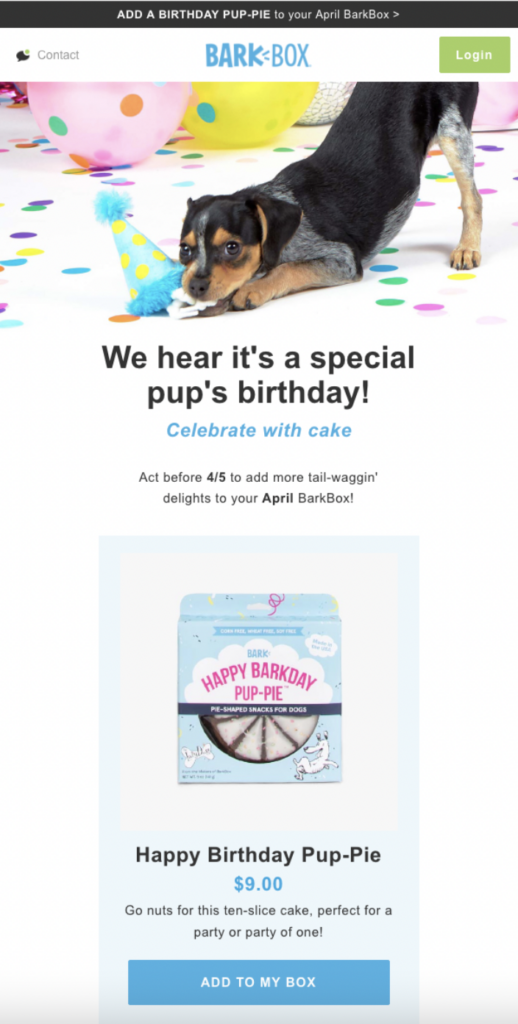
Capturing your subscriber’s geographic location is as easy as asking for their zip code when they opt-in. Knowing where your contacts live lets you localize subject lines, deploy emails based on their time zones, and only send location-specific emails to those readers. Spartan took geolocation to the next level by offering discounts on sprints in their subscriber’s region.
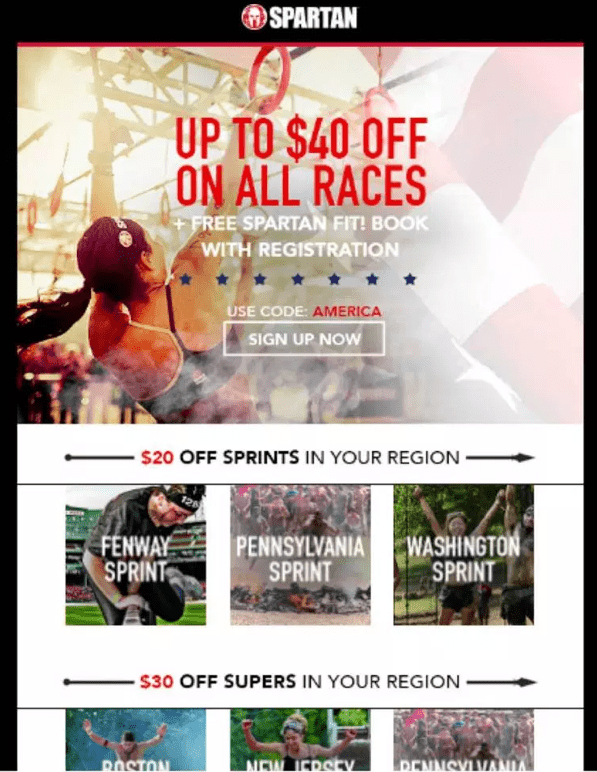
Weather can affect your mood, activities, and the clothes you’re wearing, so it’s not that crazy to assume that it can affect your purchasing behaviors, too!
Nordstrom made fantastic use of weather-specific emails with automation software that dynamically serves different content based on each visitor’s weather condition. As you can see, two different creatives were displayed based on weather conditions and temperature range.
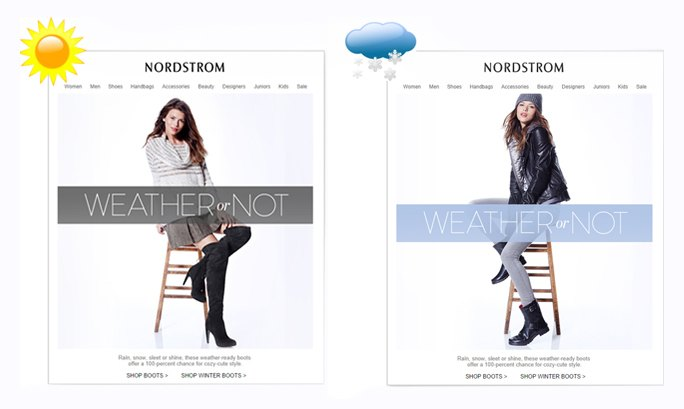
Cart abandonment emails have achieved a 28% conversion rate, so it’s in your best interest to have the proper web tracking in place to follow up using dynamic and automated content once your visitors head for the door.
Nomad’s email below made light of the situation and specifically referenced the item the reader abandoned in the cart. Abandoned cart emails are dynamic when they show and updated representation of products that are still in the contact’s cart.
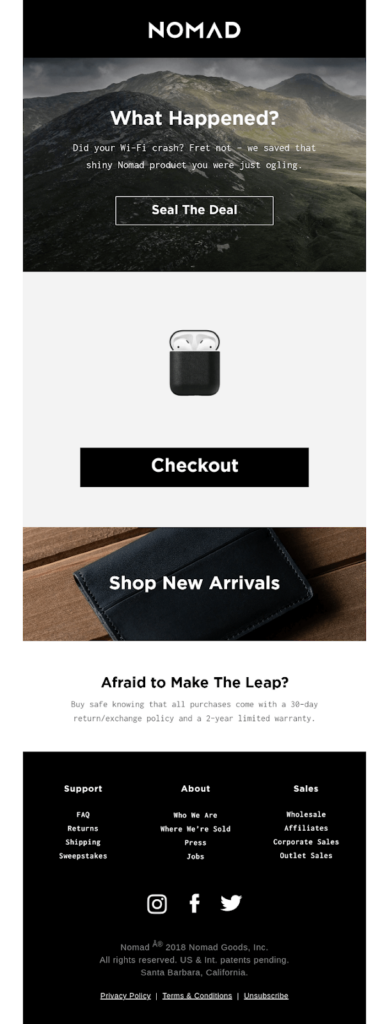
By tracking digital behavior, it’s much easier to reel shoppers back in when the cart abandonment email is dangling that shiny object in their inbox.
This last item is less about data you are gathering about subscribers and more about creating a sense of urgency, which has been shown to increase sales by 332%, according to ConversionXL. Countdown timers can be an uber effective way to incentivize your readers if you have a blow-out sale or an early bird discount. Based on when the email is opened, the dynamic software will trigger the countdown based on the allotted time left.
Selfridges&Co. made great use of this tactic by literally counting down, to the second, how long their reader had to save big on their home sale. Brilliant.
Remember, though: Everything in moderation! Giving away a whitepaper doesn’t warrant a countdown timer (obviously). We want our readers to feel a sense of urgency, not be crippled by anxiety.
Designing, planning, and developing dynamic email campaigns is going to take some time and effort. In addition to email testing that checks content and provides previews to help you catch rendering issues, you also want these campaigns to make it to the inbox.
Become a master of email deliverability with Mailgun Optimize. With this complete deliverability suite you can predict inbox placement before a campaign launches. Mailgun Optimize also helps you monitor blocklists and catch spam traps on your list. Plus, Email validations help you keep your list clean and prevent lost leads.
Use Email on Acid and Mailgun Optimize to be sure you always put your best email forward.
This article was updated on December 6, 2022. It was first published in September 2015.